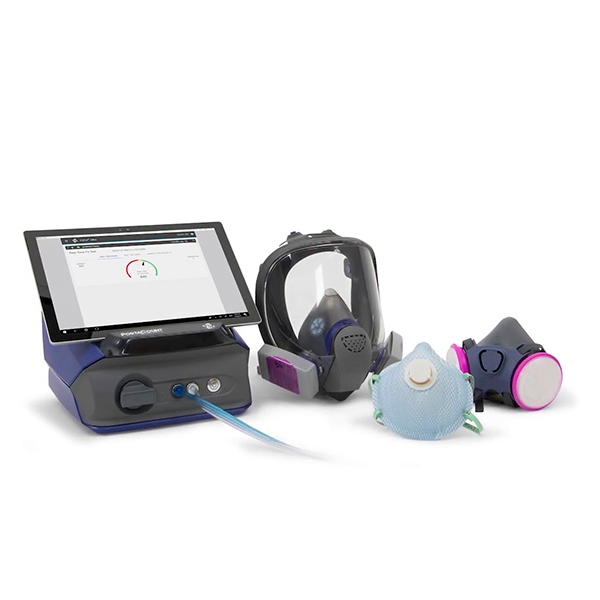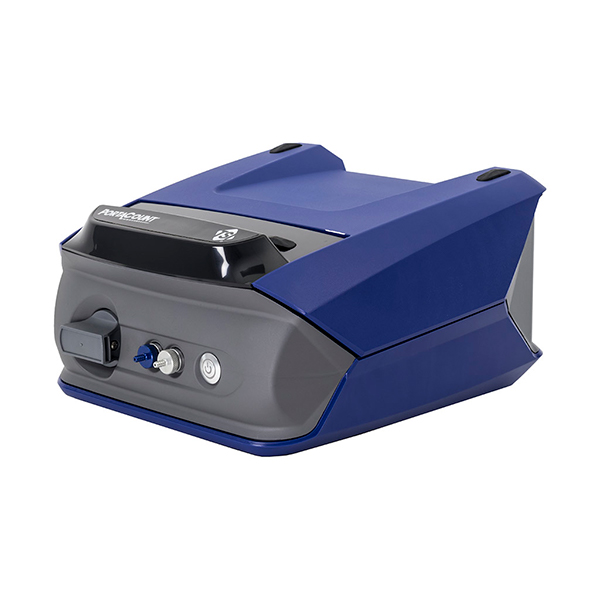
Respirator Fit testing is an important aspect of ensuring the effectiveness of respiratory protective equipment (RPE) in protecting workers from harmful airborne contaminants in the workplace. The goal of fit testing is to verify that the RPE selected by the worker provides a proper seal to the wearer’s face, ensuring that inhaled air is filtered through the respirator and not through any gaps around the face. The fit testing process involves a series of tests that determine the proper fit of the RPE and make necessary adjustments to ensure a secure and comfortable fit. The fit testing process is critical to the overall effectiveness of the RPE and plays a vital role in protecting workers in hazardous work environments.



Home » Occupational Health and Safety » Respirator Fit testing
Respirator Fit testing is a process used to determine the proper fit of a respirator on an individual. It is an important aspect of respiratory protection as it ensures that the respirator forms a tight seal around the face, providing the intended level of protection against harmful airborne particles, gases, or vapors. Respirator Fit testing helps to minimize the risk of exposure to these harmful substances, providing a safer working environment for the individual. The importance of Fit testing is further emphasized by the fact that different individuals may require different sizes and models of respirators to achieve an acceptable fit.
Respirator fit testing can be performed by trained and qualified individuals who are knowledgeable about the specific type of respirator being tested and the fit testing method being used. This may include industrial hygienists, safety professionals, occupational health and safety personnel, and others with relevant training and experience. It is important to ensure that the individual performing the fit test is properly trained and equipped to carry out the testing process accurately and effectively.
Respirator fit testing is performed to ensure that a respirator is properly fitted to an individual’s face, providing an effective seal that will protect the user from inhaling harmful substances. The test is typically performed by a trained individual, such as a safety professional or occupational health specialist, who uses a specific method to assess the fit of the respirator on the wearer. The method used for fit testing can vary, but common methods include qualitative fit testing, which uses a sensory-based test (such as taste, smell or irritant smoke), or quantitative fit testing, which uses a machine to measure the fit of the respirator. The fit test is performed in a controlled environment, following the manufacturer’s instructions and guidelines provided by regulatory agencies such as OSHA. It is important to note that fit testing should be conducted annually or whenever there are changes to the wearer’s physical characteristics, such as weight loss or gain, facial surgery, etc.
Respirator fit testing is an important procedure to ensure the proper fit of a respirator on an individual. There are several methods of fit testing for respirators, including qualitative fit testing and quantitative fit testing.
Qualitative fit testing uses sensory methods such as taste, smell, or irritation to detect any leakage into the respirator. This method is often used in industries where workers require a quick and simple fit test.
Quantitative fit testing, on the other hand, uses a machine to measure the amount of leakage into the respirator. This method is more accurate and is used in industries where workers require a high level of protection.
Both qualitative and quantitative fit testing methods are used to determine the proper fit of a respirator and to ensure that it provides adequate protection for the worker. The specific method used may depend on the type of respirator being used, the industry, and the level of protection required.
Respirator fit testing is regulated by several organizations, including OSHA (Occupational Safety and Health Administration) and NIOSH (National Institute for Occupational Safety and Health). The OSHA Respiratory Protection Standard (29 CFR 1910.134) requires employers to provide a fit test for each employee who is required to wear a respirator as part of their job. NIOSH also provides guidance on the proper fit testing of respirators in its certification standards. Both organizations also provide guidelines on the types of fit testing methods that can be used, including qualitative and quantitative fit testing. It is important to follow these regulations and standards to ensure that employees are properly protected while wearing a respirator on the job.
Respirator fit testing is important in the workplace because it ensures that the respirator selected by the worker fits properly and will provide the expected level of protection. Fit testing ensures that there is no leakage of contaminated air into the breathing zone of the worker and provides assurance that the respirator will function as intended. This helps to reduce the risk of occupational exposure to respiratory hazards, such as dust, fumes, and gases, and protect workers from inhaling hazardous substances. Fit testing also helps to increase the comfort and acceptability of the respirator, which can lead to improved compliance and reduced resistance to wearing the respirator. By ensuring that respirators fit properly, fit testing can contribute to a safer and healthier work environment and help to protect workers from respiratory hazards.
Fit testing for respirators is an important step in ensuring the proper protection of workers who are required to wear respirators in the workplace. Key considerations for conducting fit testing include the type of respirator being used, the work environment and the potential hazards present, the fit testing method chosen, and the qualifications of the person conducting the fit test. Other important factors to consider include the frequency of fit testing, the availability of fit testing equipment and supplies, and the cost and time required to perform the test. It is important to ensure that fit testing is performed in accordance with relevant regulations and standards to ensure the maximum level of protection for workers.
When choosing a fit test for respirators, there are several key considerations to take into account. First, it’s important to determine what type of respirator you are using and what type of fit test is appropriate for that respirator. For example, some fit tests are designed specifically for half-mask respirators, while others are designed for full-face respirators.
It’s also important to consider the environment in which the respirator will be used, as well as the specific hazards that the respirator is meant to protect against. For example, if you will be using the respirator in a dusty or dirty environment, a fit test that involves physical activity or speech may not be appropriate.
Additionally, it’s important to consider the resources and budget available for conducting the fit test. Some fit tests are relatively simple and inexpensive, while others may require specialized equipment or trained personnel.
Ultimately, the right fit test for your respirators will depend on a variety of factors, including the type of respirator, the hazards present in the workplace, and your resources and budget. It’s important to work with a knowledgeable provider or consultant to determine the best fit test for your specific needs.
With a mission to provide trusted measurement, application guidance, and data analytics solutions, TSI is committed to helping its customers make informed decisions. The company’s vision of creating a better world by protecting people, products, and the environment speaks to its dedication to making a positive impact in the world. With TSI’s innovative products and focus on quality, we are confident that they are a valuable partner in our mission to protect what matters.
The Respirator Fit Testing Monitor is a device designed to perform adjustment tests on half-face and full-face respirators. It uses a particle counter to determine the adjustment factor, which represents the difference in particle concentration between the environment and the interior of the respirator. This monitor ensures that the respirator provides adequate protection to the user by quantifying the effectiveness of the seal between the respirator and the individual’s face. The monitor features a color touch screen for easy operation, a rechargeable isopropyl alcohol cartridge for continuous use, and a USB port for data download and management. The device is compliant with OSHA protocol 29 CRF1910, as well as other industry standards, and is equipped with FitPro software for data analysis and reporting.
This product is a monitor that performs fit tests on various types of respirators including half-face, full-face and disposable respirators. It uses a particle counter and high purity isopropyl alcohol to determine the adjustment factor, which is the difference in the concentration of particles inside and outside the respirator. This device provides accurate and reliable results that help to ensure the proper fit and protection of the respirator on the wearer. The monitor features an easy-to-use color touch screen, a rechargeable isopropyl alcohol cartridge for 6 hours of continuous operation, and a USB port for data download and database generation. It operates using AC current and is equipped with FitPro software for data analysis, instrument configuration and report generation.
This monitor allows for efficient and accurate adjustment tests on half-face and full-face respirators. It uses a condensation particle counter principle with high purity isopropyl alcohol to determine the adjustment factor, which measures the difference in particle concentration between the environment and inside the respirator. The monitor is compatible with various respirators, including NIOSH 100 Series and NIOSH 99 Series, and meets OSHA, CSA, HSE, and ANSI protocols. The monitor features an intuitive interface with user-friendly animations and step-by-step guides for the operator, and can be operated using a Windows 10-based tablet via Wi-Fi connection. It has a range of 1 to 10,000 for the Adjustment Factor, with an accuracy of +/- 10%. The internal pump has a volumetric flow of 350 cm3/min and the monitor has a temperature range of 0-38°C. It also features USB-A, USB-C, and Wi-Fi ports for easy connection and a rechargeable isopropyl alcohol cartridge for up to 6 hours of continuous operation. The monitor operates with AC current.
The monitor allows for the assessment of the effectiveness of half-face and full-face respirators, using a particle counter to determine the adjustment factor between the concentration of particles in the environment and the interior of the respirator. This device provides a quantifiable measurement of the respirator’s seal to a person’s face, ensuring proper protection during usage. The monitor is compatible with NIOSH 100 and 99 series respirators, as well as N95 disposable respirators, and can be used with the FitPro Ultra software on a Windows 10 tablet via Wi-Fi connection. The device features a new user-friendly interface with step-by-step guides, an adjustable factor range from 1 to 10,000 or 1 to 200 for N95 respirators, an internal pump with a flow rate of 350 cm3/min, and a rechargeable isopropyl alcohol cartridge. Operation is powered by AC current.
Tel +1 561-912-9809 / 561-9112-7201
E-mail [email protected]
6590 W Rogers Circle Suite# 11&12
Boca Raton – FL 33487
+1 561-912-9809 / +1 561-912-7201
[email protected]
6590 W Rogers Circle, Suite #11&12
Boca Raton, FL 33487